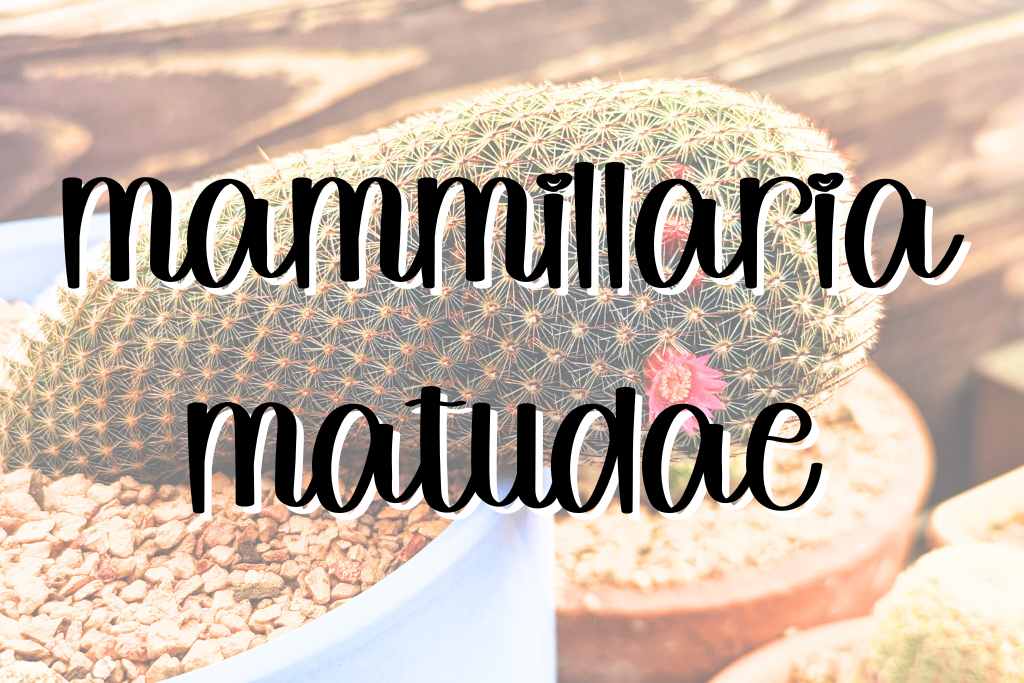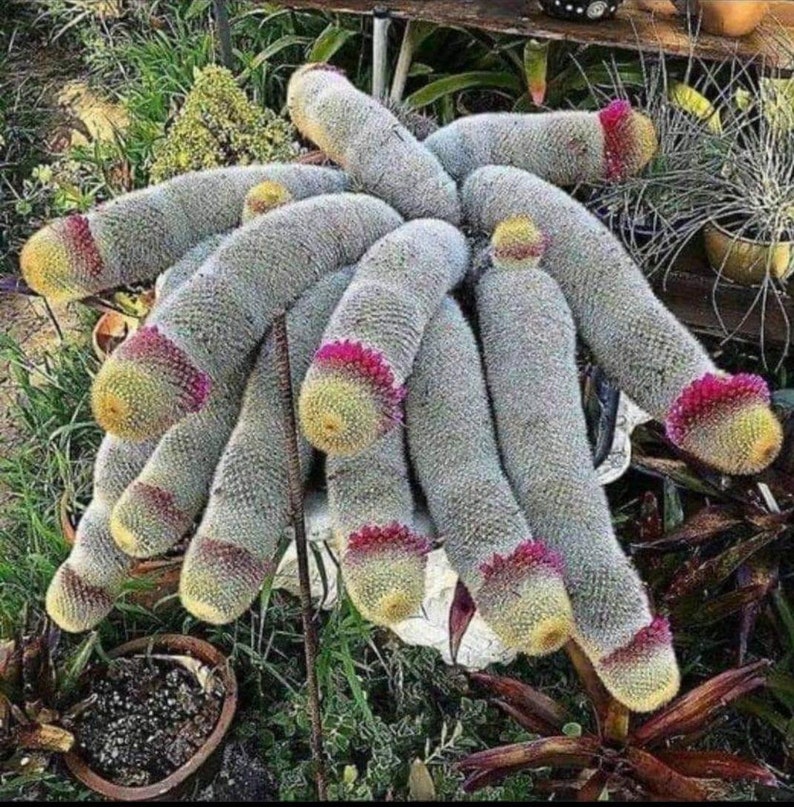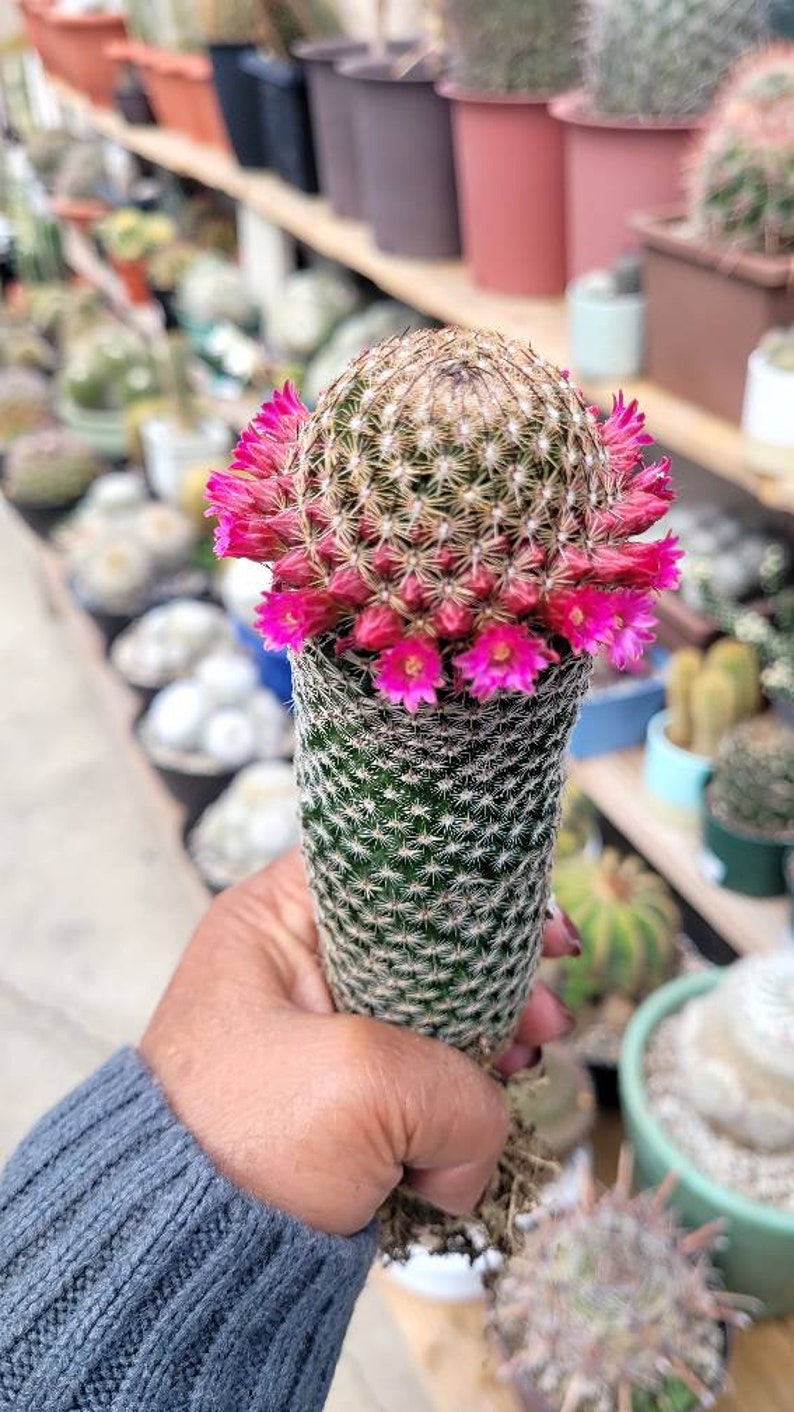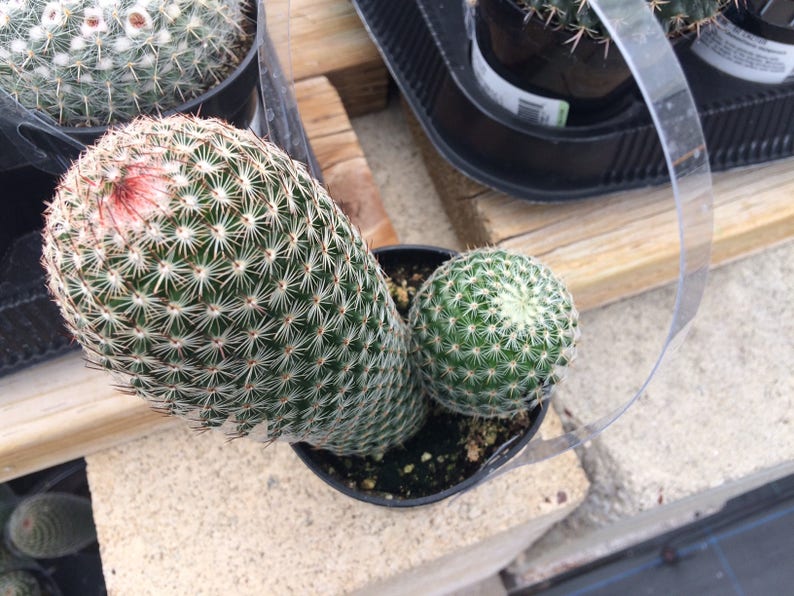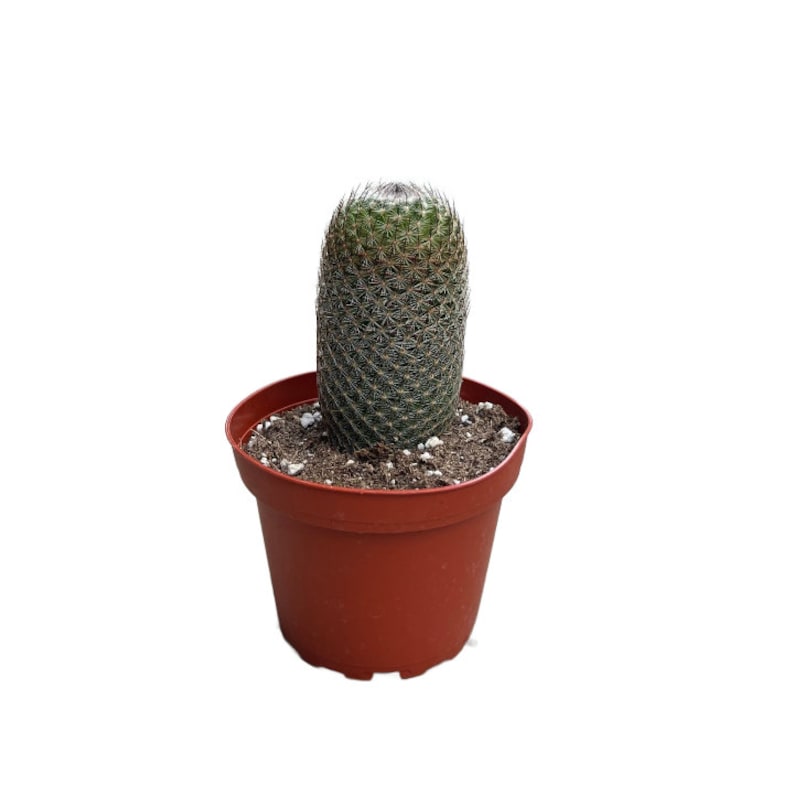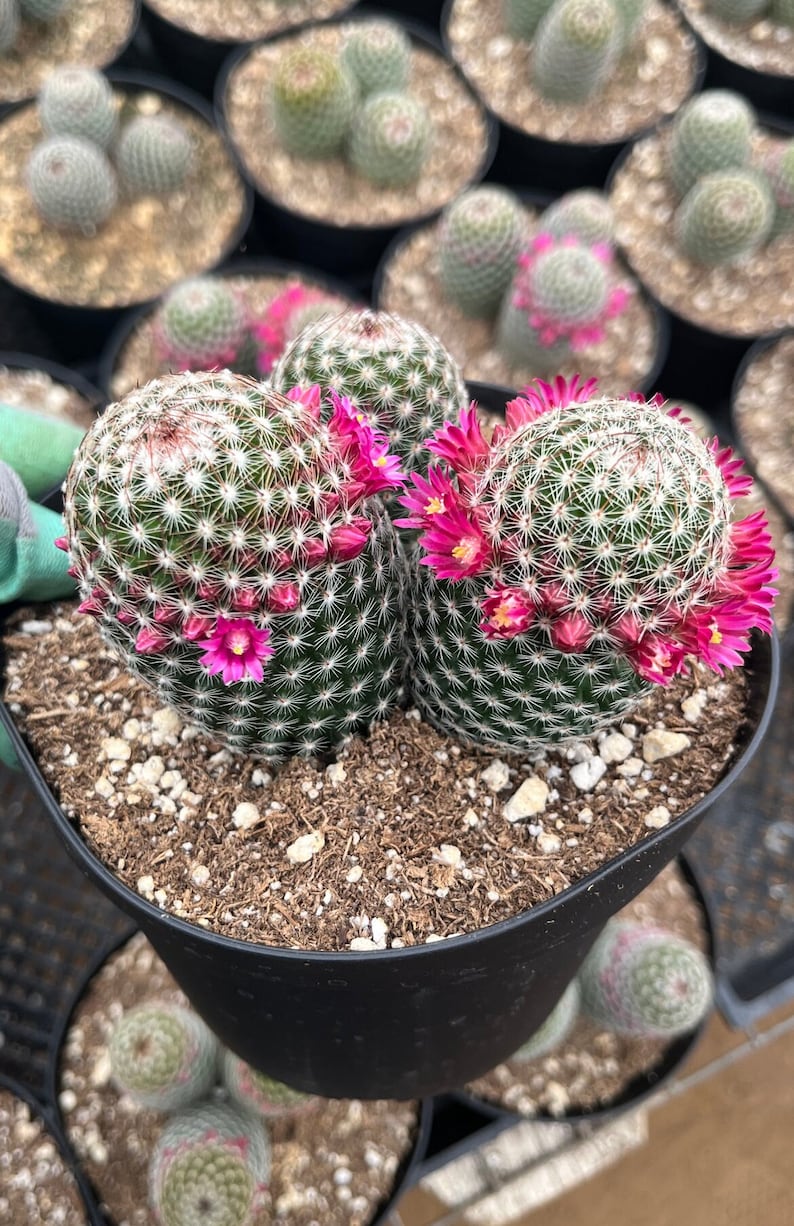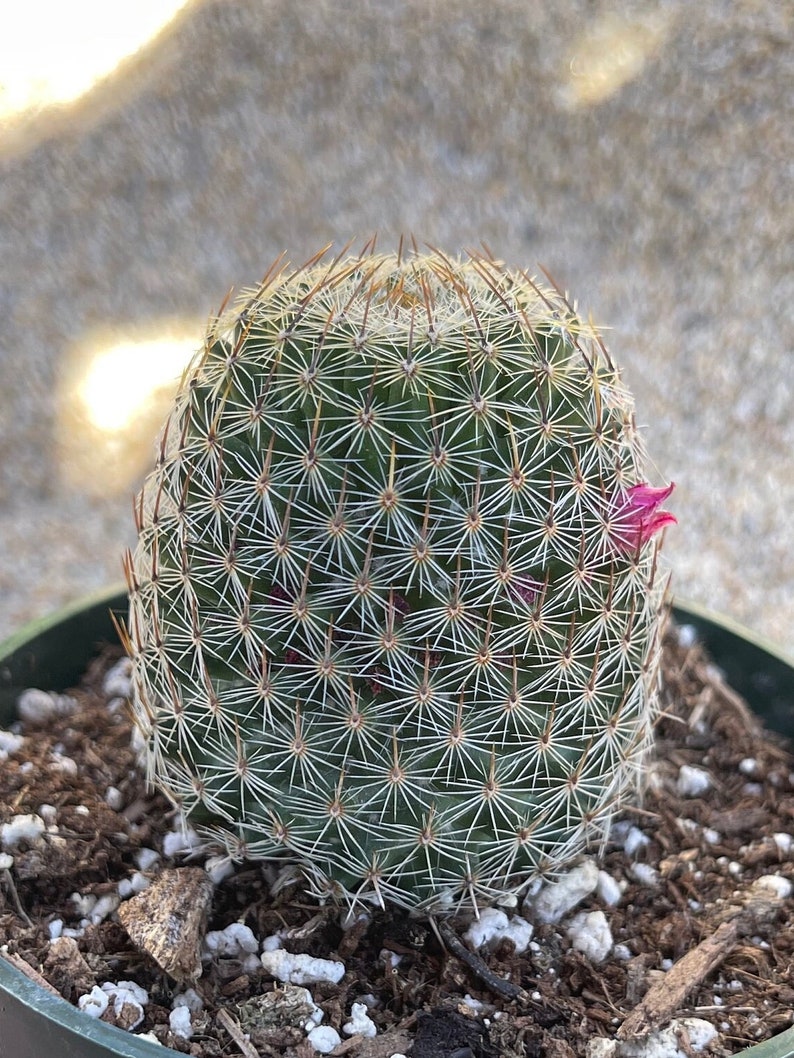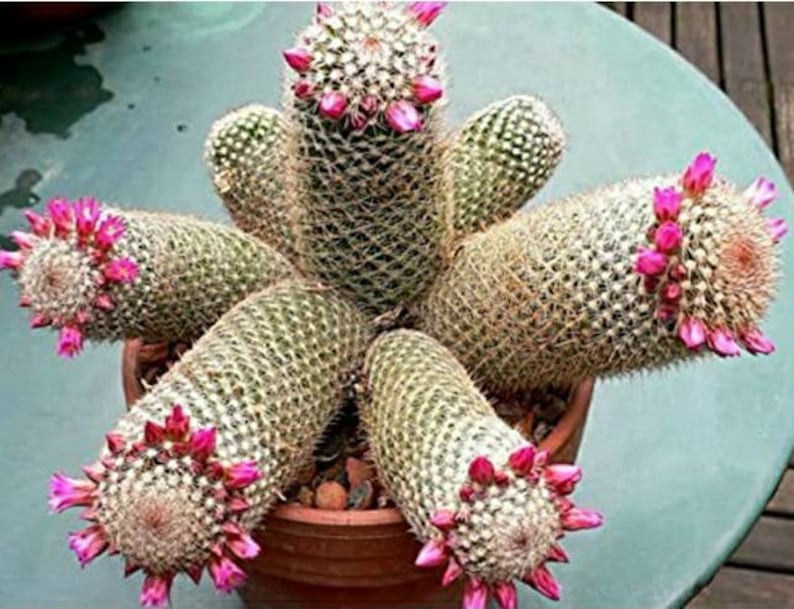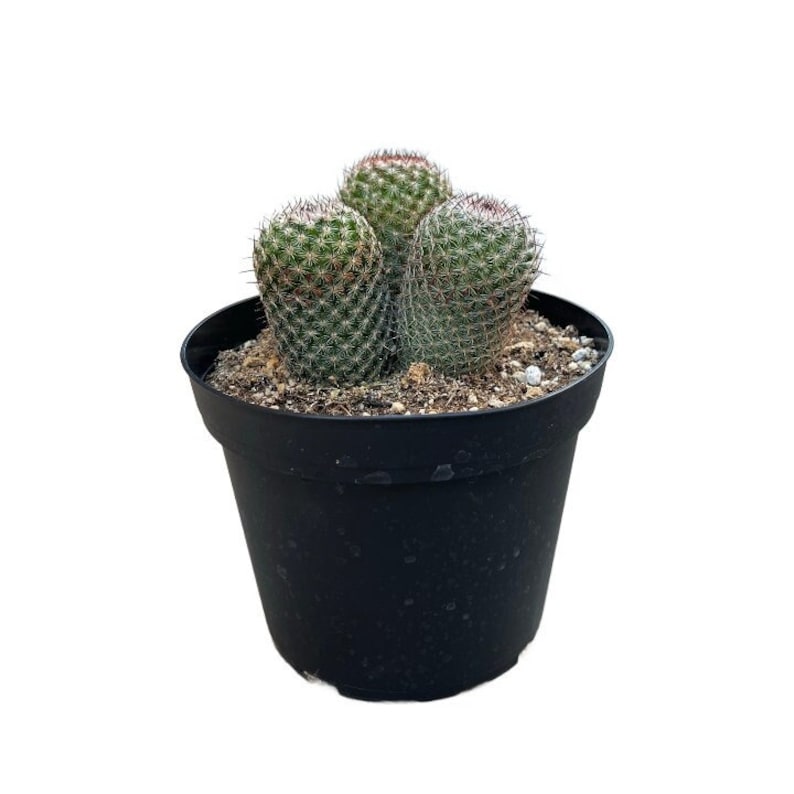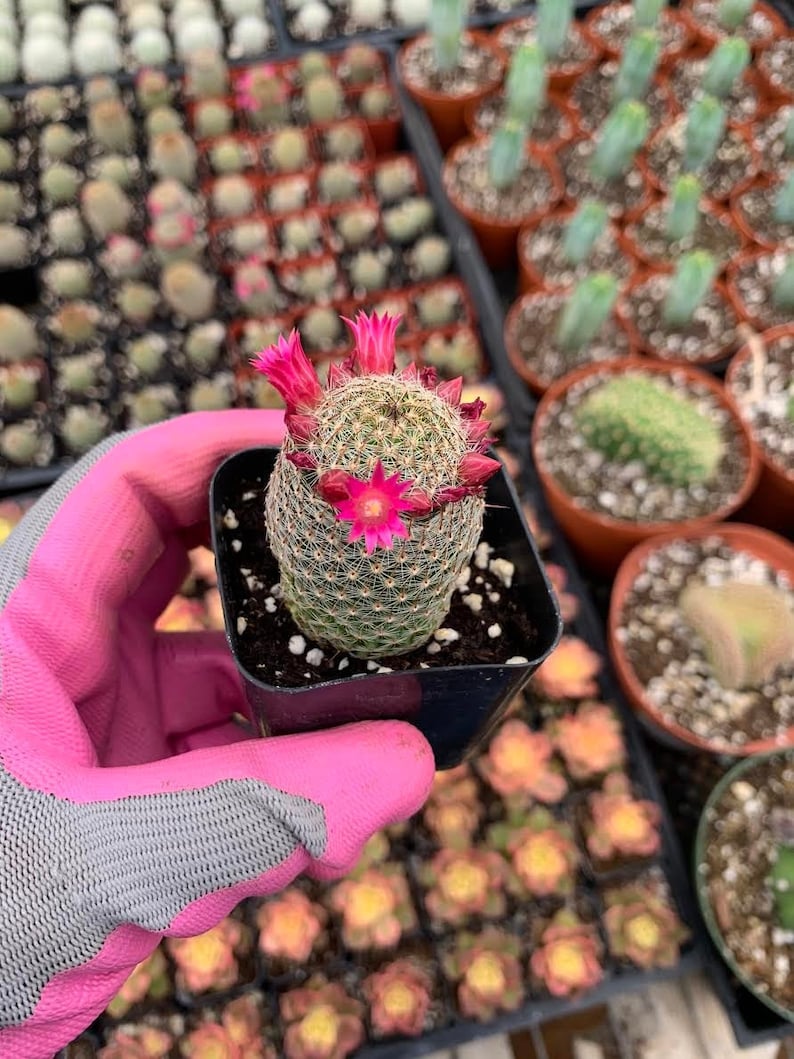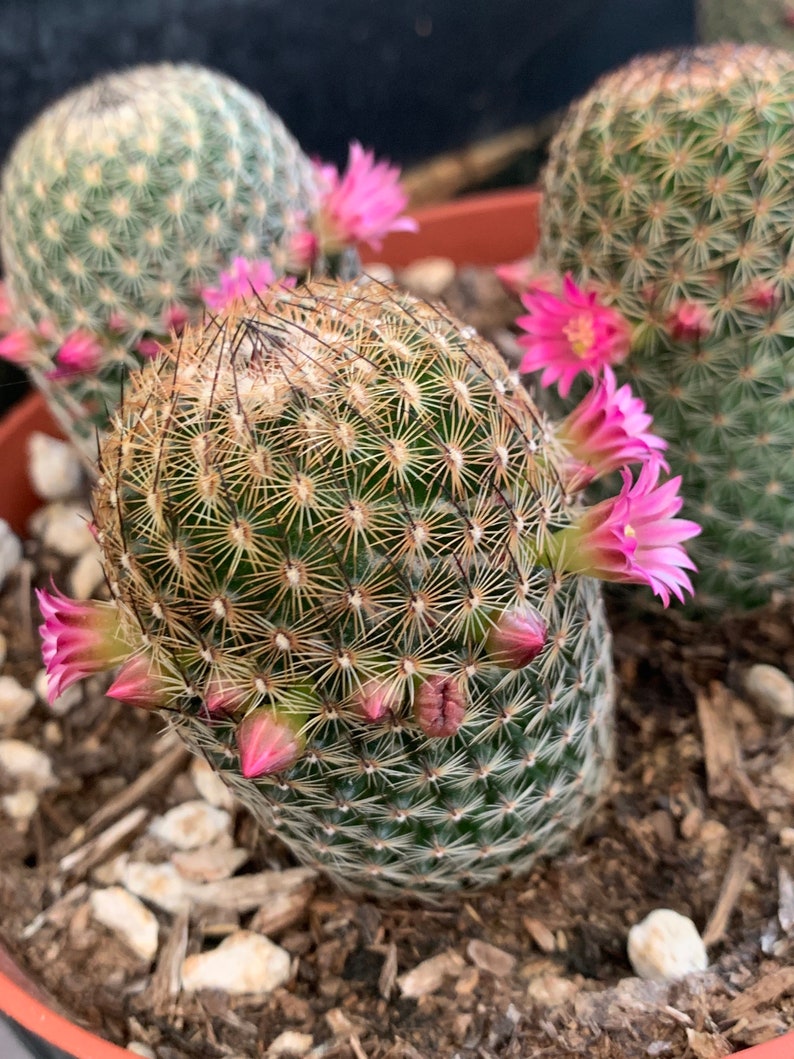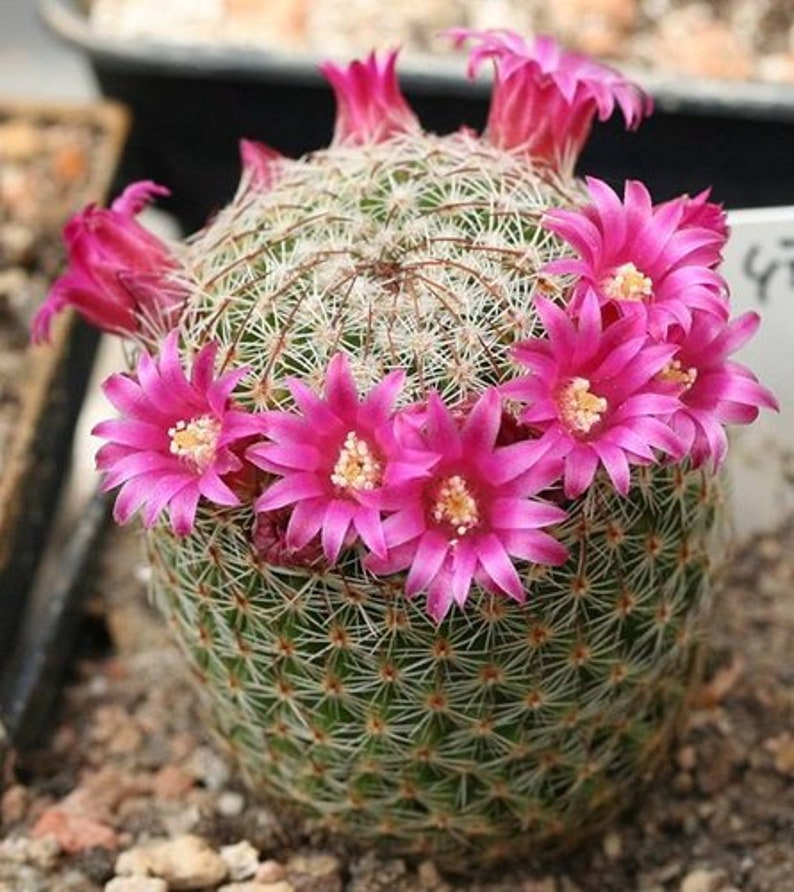Origins and Habitat of ‘Thumb Cactus’
The ‘Thumb Cactus’, scientifically known as Mammillaria matudae, is native to the arid regions of northeastern Mexico. This cactus thrives in the states of Nuevo León and Tamaulipas, where it can be found growing on rocky slopes, hillsides, and in desert scrub environments.
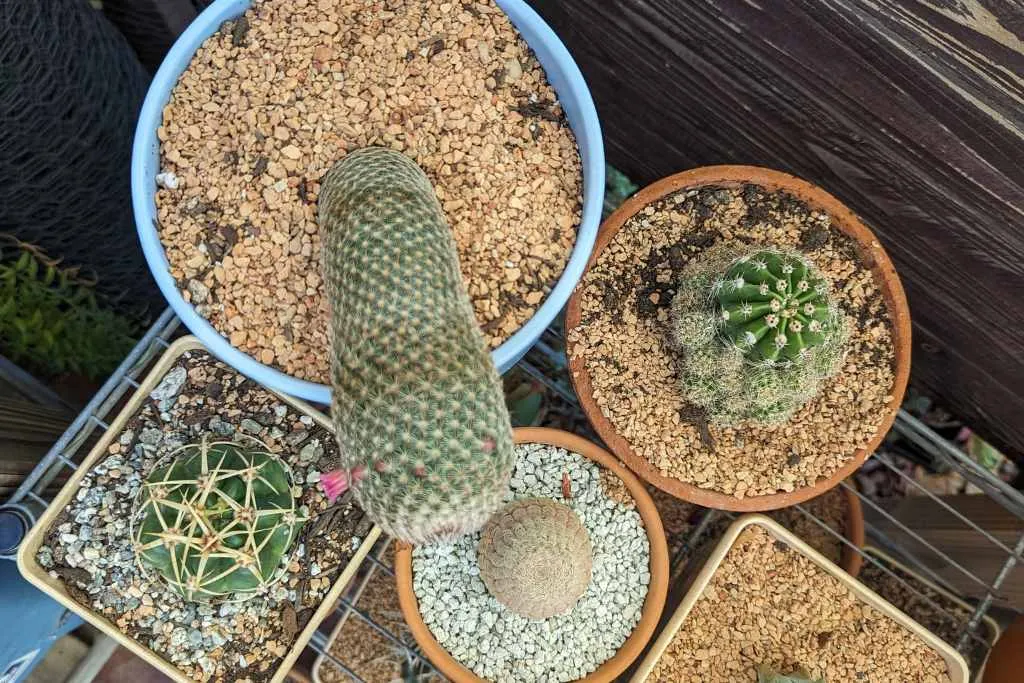
Dig in!
Unique Adaptations for Thriving in Harsh Environments
To flourish in its harsh natural environment, the ‘Thumb Cactus’ has developed several unique adaptations:
Dense Spines for Shade and Moisture Collection
The cactus possesses dense spines that provide shade, protecting it from the scorching sun, and also help collect moisture from dew, which it stores for later use.
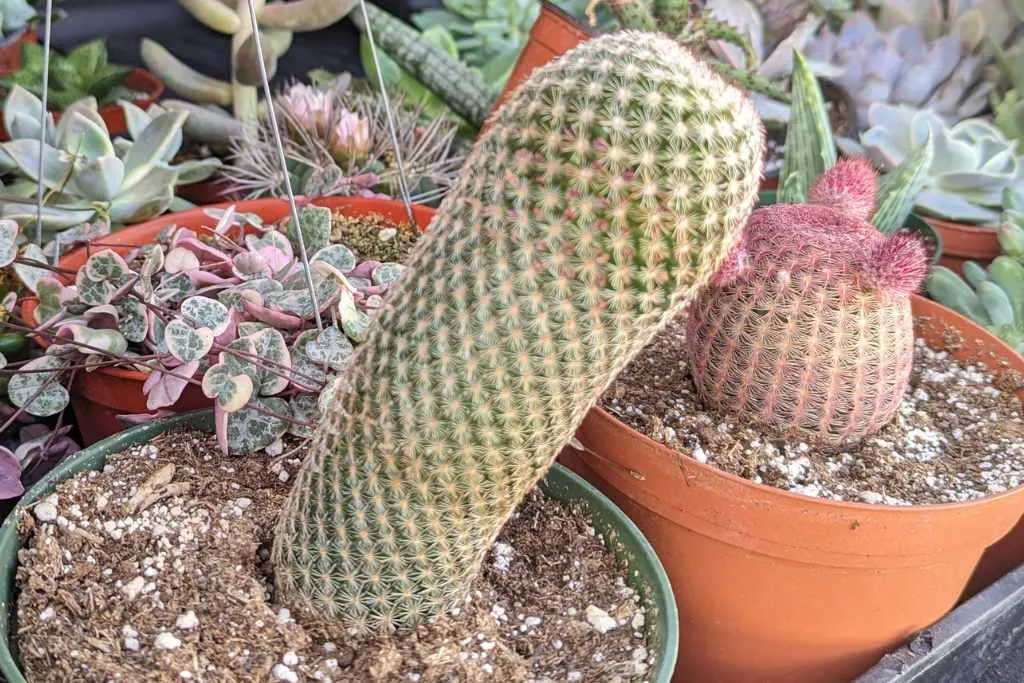
Large Taproot for Water Storage
During periods of drought, the ‘Thumb Cactus’ relies on its large taproot, which stores water underground, allowing the plant to survive prolonged dry spells.
Succulent Stems for Water-Conserving Photosynthesis
The cactus has succulent stems, enabling it to carry out efficient CAM (Crassulacean Acid Metabolism) photosynthesis, a water-saving process that aids in its survival in arid conditions.
Identifying Characteristics of Mammillaria matudae ‘Thumb Cactus’
Mammillaria matudae ‘Thumb Cactus’ is a small, upright columnar cactus that typically reaches a height of about 6 inches. Over time, it forms basal clusters, and its stems elongate and spread. Each stem features distinct conical tubercles adorned with short, curved white spines surrounded by longer central spines.
Growth Habit and Mature Size
This cactus species exhibits a slow growth rate, taking 5 or more years to reach its mature size. As it grows, it maintains a solitary or weakly-clustering upright habit with minimal branching.
Flowers and Blooming Period
In the spring, specifically during March and April, Mammillaria matudae ‘Thumb Cactus’ delights with its striking magenta to purple-red flowers. These lovely blooms encircle the tips of each stem and can last for up to 2 weeks. The flowering is triggered by long days and warm temperatures.
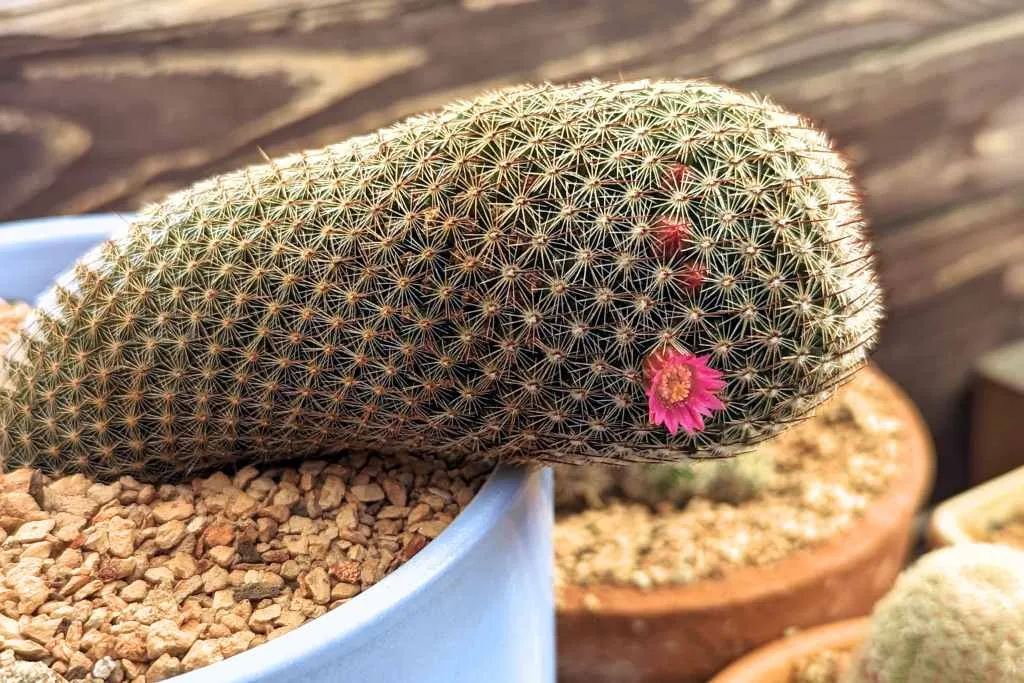
Mammillaria matudae Light and Hardiness Requirements
Mammillaria matudae ‘Thumb Cactus’ thrives when exposed to full sunlight, both indoors and outdoors. While it can tolerate light shade, it truly prefers basking in maximum sunlight. To ensure its health, maintain daytime temperatures of around 80-90°F. Moreover, this cactus can endure brief light frosts down to 20°F as long as the soil is dry.
Care and Watering Tips
To provide optimal care for Mammillaria matudae ‘Thumb Cactus’, follow these guidelines:
Planting
Use a fast-draining cactus mix for planting.
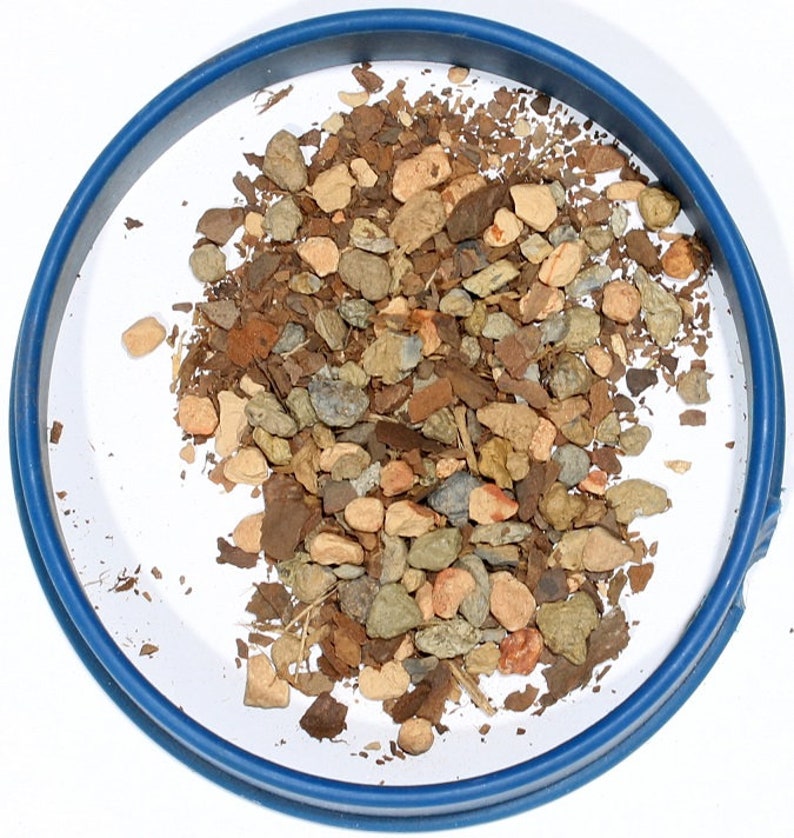
Consider amending your soil with Bonsai Jack’s gritty mix to ensure your succulent soil drains quickly to prevent it from staying moist for too long. Source: Etsy
Lighting
Ensure the cactus receives bright, direct light throughout the year.
Repotting
Repot the ‘Thumb Cactus’ every 2-3 years in the spring.
When you’re rooting or transplanting your succulents and cacti, use SUPERthrive to help reduce the chance of transplant shock and grow a strong root system.
Protecting Mammillaria matudae ‘Thumb Cactus’ from Cold and Rain
To safeguard Mammillaria matudae ‘Thumb Cactus’ from potential harm, avoid exposing it to heavy rain or overly wet soil for extended periods. The succulent stems are susceptible to rot if overwatered. During periods of excessive rain, move potted plants under shelter. Additionally, never leave the cactus outdoors when temperatures drop below 20°F.
Fertilizer Needs
During its active growing season in the spring and summer, Mammillaria matudae ‘Thumb Cactus’ benefits from monthly fertilization using a balanced cactus fertilizer. Dilute the fertilizer to half-strength. However, refrain from feeding the cactus in the fall and winter when it enters dormancy.
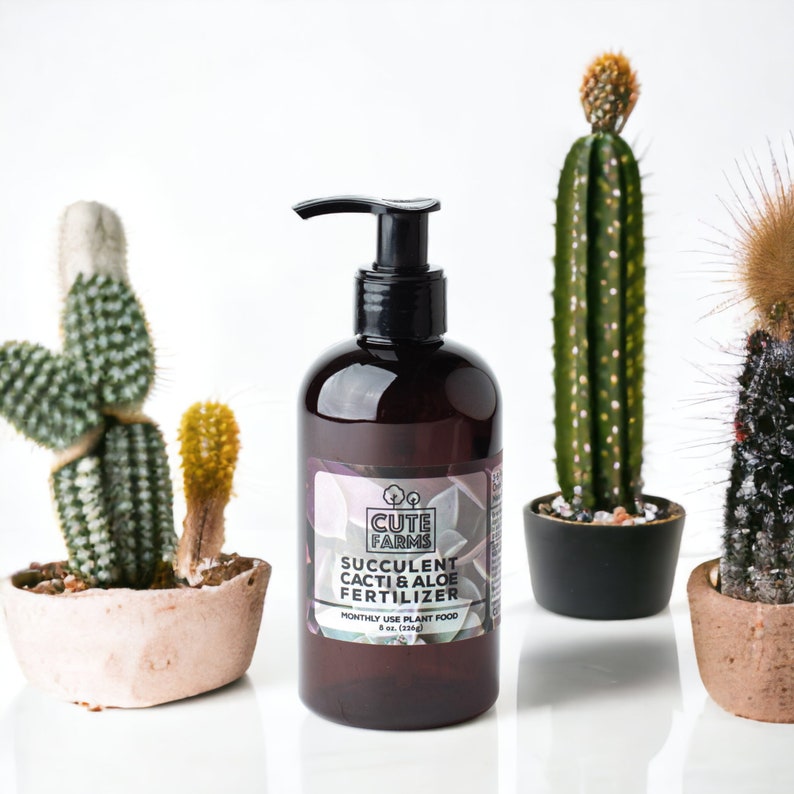
Succulent fertilizer available to purchase on Etsy.
Propagation and Pruning Tips
To propagate Mammillaria matudae ‘Thumb Cactus’, you can use either seeds or offsets that form at its base. Gently detach the offsets with roots and repot them. Pruning is generally unnecessary, but if needed, trim off any discolored stems. Allow offsets to fully mature before removal.
Potential Problems and Pests
Overwatering is the primary concern for Mammillaria matudae ‘Thumb Cactus’, as it can lead to rot. The plant may also face infestations by mealybugs, scale, and other sap-sucking insects. Treating pests with horticultural oils or insecticidal soaps is recommended. Ensuring excellent drainage will help prevent many issues.
As an Amazon Associate I earn from qualifying purchases at no additional cost to you.
Fix the pest problem on your succulents and cacti with these popular insecticides.
Successfully Growing Mammillaria matudae ‘Thumb Cactus’ Indoors
Mammillaria matudae ‘Thumb Cactus’ adapts remarkably well to indoor environments. To ensure successful growth, follow these tips:
Placement
Position the cactus in a sunny south or west-facing window.
Supplemental Lighting
Use grow lights to supplement natural light, especially in areas with limited sunlight.
Recognizing Dormancy
During the winter or extreme heat, Mammillaria matudae ‘Thumb Cactus’ may enter a period of dormancy, during which its growth temporarily halts, and the stems may shrink slightly. It is crucial not to overwater dormant plants, as they will resume growth when conditions improve.

